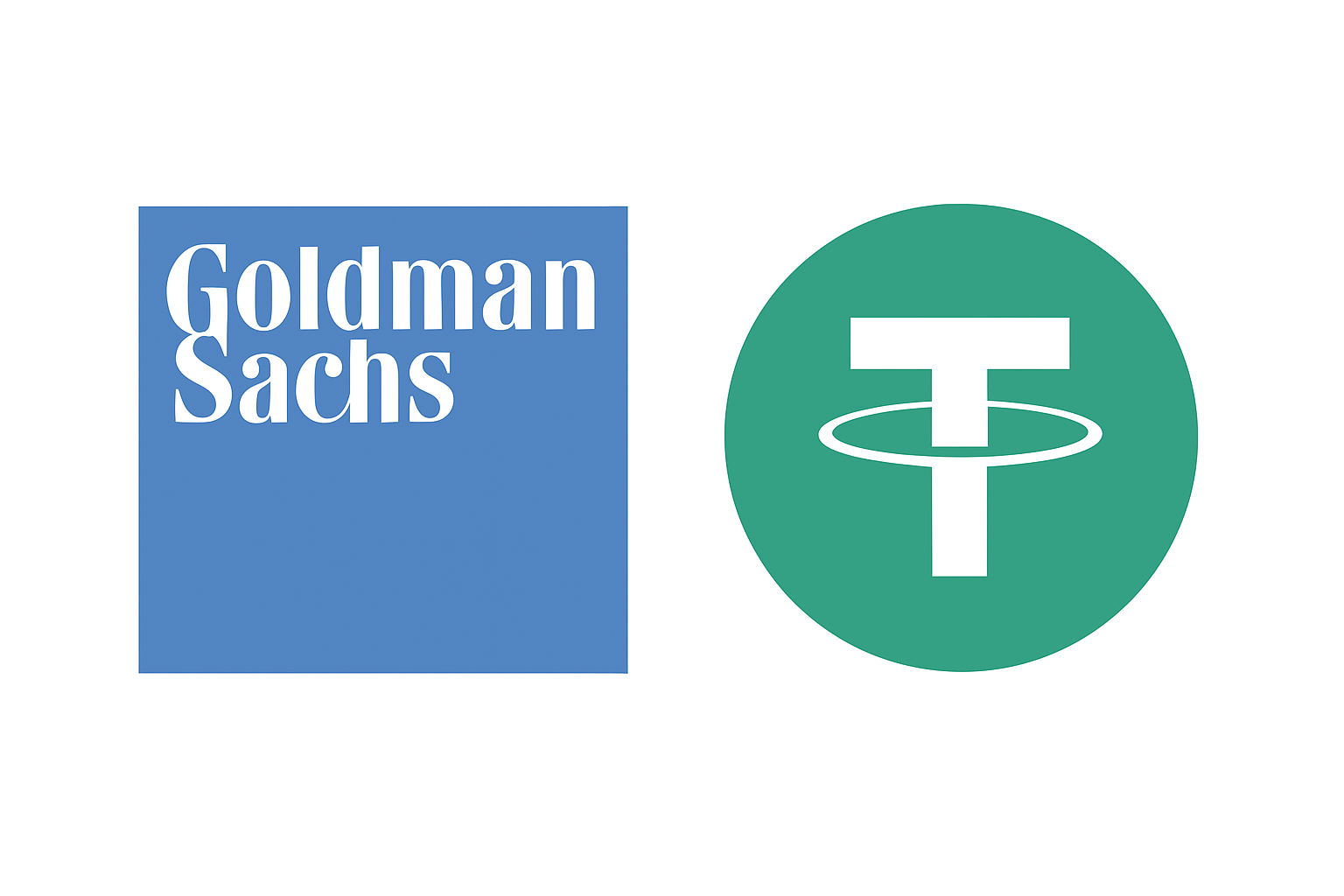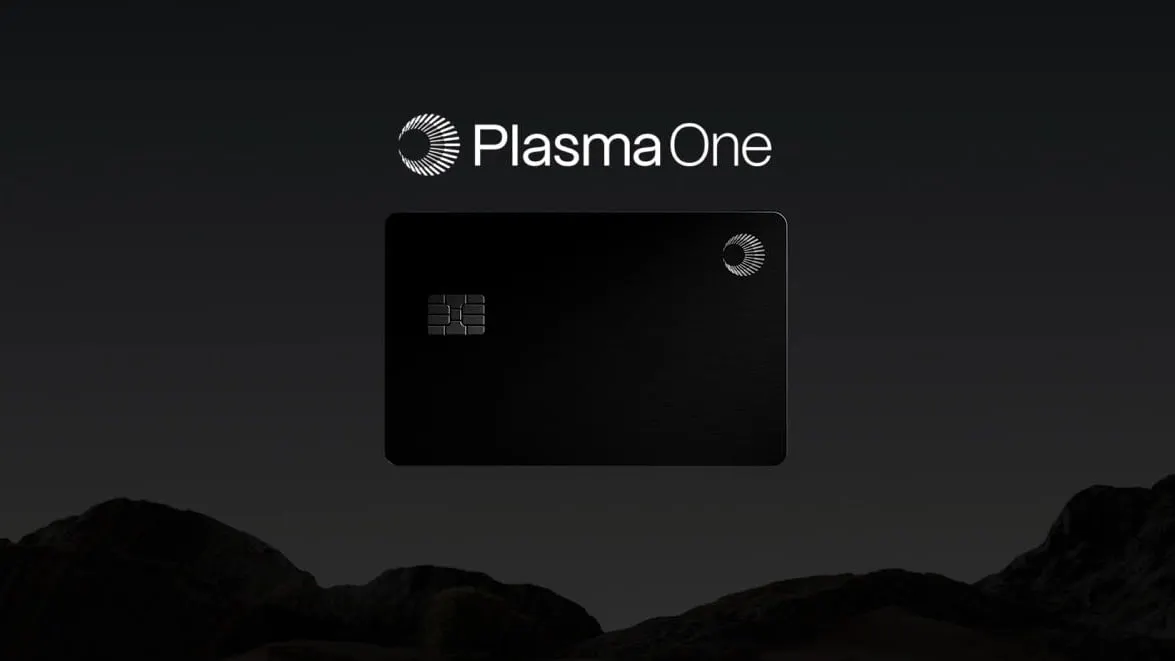Stabled Up by The Rollup
The Trillion-Dollar Rebrand: Why Stablecoin Issuers Are Tech Companies, Not Banks
A recent target valuation for Tether at $500 billion signals a fundamental market shift, indicating that the path to a multi-trillion-dollar stablecoin market is paved by software economics, not traditional financial metrics.
October 7, 2025

The Trillion-Dollar Rebrand: Why Stablecoin Issuers Are Tech Companies, Not Banks
A recent target valuation for Tether at $500 billion signals a fundamental market shift, indicating that the path to a multi-trillion-dollar stablecoin market is paved by software economics, not traditional financial metrics.
Recent reports that Tether is targeting a $500 billion valuation in a future equity raise have sent shockwaves through financial circles. The figure, which would place it in the same league as America’s largest banks, naturally invites comparisons to financial titans like Goldman Sachs. This comparison, however, relies on a flawed premise.
Is a financial services valuation the correct framework for analyzing an entity that operates with the economics of a software company? The answer is no. Such a valuation only becomes logical when we stop viewing stablecoin issuers as banks and start seeing them for what they are: technology platforms.
Stablecoin issuers are not financial institutions; they are technology companies with software-driven economics. This fundamental re-categorization is the key to understanding their path to a multi-trillion-dollar market, as it unlocks new revenue models, distribution channels, and efficiencies that legacy finance cannot replicate. This analysis will break down the technology-driven catalysts that justify this new paradigm and map the clear, logical, and inevitable path from billions to trillions.
Stablecoin Issuers Are Technology Companies
To understand the future of the stablecoin market, one must first correctly classify its primary players. The business model of a stablecoin issuer is driven by technology and distribution, not simply reserve management.
As Carl Vogel, General Partner at 6th Man Ventures, notes, the core challenge lies in the digital realm. "The hard part of these businesses is not the reserve management," he explains. "It's about technology and distribution."
This distinction is most evident in the immense operational leverage these companies possess, a hallmark of a software-driven enterprise. Bhaumik Kotecha, a key figure at Paxos, highlights this with a powerful contrast. "How many employees does Goldman Sachs have versus how many employees does Tether have?" he asks.

The data provides a stark answer. As of 2024, Goldman Sachs employed approximately 46,500 people to manage its operations. In contrast, Tether generated a reported $14 billion in profit in 2024 with a team of fewer than 200, translating to an astonishing profit per employee of over $83 million. This level of efficiency, driven by software, automation, and powerful network effects, is characteristic of a technology platform, not a traditional, people-heavy financial institution. The value is generated through software-based distribution and high-margin economics, which allows for massive scale with minimal incremental cost.
AI Agents Will Programmatically Reshape Liquidity
The first major technological catalyst reinforcing the "tech company" thesis is the rise of onchain artificial intelligence agents. These agents represent a new class of "users" who operate with pure economic rationality, creating a market dynamic that will accelerate the evolution of stablecoin issuers into competitive tech platforms.
These AI agents are being developed to automate and optimize a range of onchain financial tasks, from discovering the best swap prices to executing complex yield-farming strategies. They analyze vast amounts of real-time data to find the most efficient transaction routes, a task too complex for manual execution.
The implications for the stablecoin market are profound. As Brustkern details, an AI agent will "programmatically find the best deal and find the best economics." Unlike human consumers, who are often influenced by brand loyalty or inertia, AI agents are designed for pure optimization.
"Human consumer behavior is much harder to change and often not like rational versus with an AI agent that's doing this, you can literally program it to say, I want to achieve this outcome with the best economics possible."
This programmatic rationality will inevitably drive fee compression across the stablecoin ecosystem. Issuers will be forced to compete on the merits of their technology, liquidity, and features rather than relying on passive user behavior. This market pressure further cements their identity as technology platforms, where innovation and efficiency are the primary drivers of success, moving them further away from the passive asset manager model.
Purpose-Built Blockchains Create New Revenue Streams
Leading stablecoin issuers are strategically building out their technology stacks to move beyond legacy revenue models. The development of purpose-built blockchains, such as Plasma's deep partnership with Tether, should be viewed as a strategic infrastructure play that fundamentally transforms an issuer's business model.
By owning or deeply integrating with the underlying blockchain, an issuer evolves from a simple asset manager into an ecosystem operator. This shift unlocks new, diversified revenue streams that are more resilient to fluctuations in interest rates. As Vogel explains, this strategy allows issuers to monetize the activity on their platform.
"The beauty about having a blockchain or partnering with a blockchain is now you don't just get money based on the interest. You get money based on gas fees for every single transaction."
This is a classic tech platform strategy. Instead of relying solely on interest income from reserves, issuers can capture a portion of the value from every transaction that occurs within their ecosystem. This model incentivizes the issuer to foster a vibrant developer community and a wide range of applications, creating a self-reinforcing cycle of growth and monetization. It is a clear move toward building and owning the core infrastructure, a hallmark of dominant technology companies.
The Distribution Race Native Apps vs Fintech Incumbents
The go-to-market strategy for stablecoins is best analyzed through a classic tech industry lens. The current debate centers on a fundamental strategic choice: leverage the massive existing user bases of fintech incumbents (like Cash App) or build a proprietary ecosystem with a native application (like Plasma One).

This is a tech business problem, not a traditional finance one. The challenge is user acquisition and distribution at scale. Brustkern, drawing on his experience at Cash App and Square, provides a crucial tactical insight into this challenge.
"I worked at Cash App and Square before I came to Paxos and one of the things I saw was it is so hard to actually like do customer acquisition in a consumer fintech setting."
His commentary underscores the extreme difficulty and cost associated with acquiring users in the competitive consumer fintech landscape. While a native app offers a tailored user experience, integrating with established fintech giants provides immediate access to millions of users, bypassing the costly acquisition phase.
This strategic dilemma—build vs. buy distribution—is a defining characteristic of platform technology companies, further demonstrating that stablecoin issuers are competing on tech strategy, not just financial product offerings.
Derivatives Collateralization Is a Major Institutional Step
The recent proposal to allow stablecoins as collateral in U.S. derivatives markets represents more than just another adoption milestone. It is a technological upgrade of the core financial plumbing, replacing a slow, opaque, and fragmented legacy system with a superior tech stack.
The benefits are clear: 24/7 settlement, atomic transparency, and the potential for automated margin calls. These features promise to drastically improve capital efficiency and reduce systemic risk. However, the true significance lies in the implementation challenges, which reveal the technological nature of this transition.
Brustkern provides a practical breakdown of the hurdles institutions face, which are fundamentally systems integration problems.
"Some of these venues need institutional grade wallets... They actually need the ability to like call smart contracts. They need to be able to reconcile stablecoin balances versus fiat balances, do the reporting that's required."
This is not a simple matter of adding a new asset to a list. It requires a comprehensive upgrade of institutional infrastructure to support blockchain-native operations. The challenge is one of systems engineering and integration—a core tech discipline—which further reinforces the thesis that stablecoins are driving a technology-led transformation of finance.
Regulatory Tailwinds Accelerate Innovation
The evolving regulatory landscape in the United States is creating a fertile ground for this technological transition to accelerate. The market is witnessing a significant shift in tone from federal agencies, which is providing the certainty needed for innovation to flourish.

This pro-innovation stance is the green light for the tech-upgrade cycle to begin in earnest. It provides the regulatory clarity required for technology-driven financial products, like stablecoins, to integrate safely and seamlessly with the mainstream financial system. This political and regulatory tailwind is a crucial enabler, clearing the path for the technological disruption of legacy finance.
The Dark Horse Driver onchain Private Credit
Beyond mainstream adoption, the core technology of stablecoins and blockchains is enabling the creation of entirely new, high-margin product lines, further proving the tech company model. One of the most significant of these is onchain private credit, which Vogel identifies as a "dark horse" growth vector.
This market is a game-changer because blockchain technology radically reduces the friction and overhead associated with capital formation. Vogel highlights the inefficiencies of the traditional system, describing the process of fund formation as "extremely laborious," requiring outside firms and extensive documentation.
"But be able to put these things transparently on chain is actually a radical growth lever. Especially for mid and smaller sized companies that need access to debt but are locked out of the current financial system today."
By tokenizing debt and streamlining the fundraising process, onchain private credit democratizes access to capital for a vast, underserved market of mid-sized companies. This is a classic tech platform expansion play: using core technology to create and capture a new market that was previously inaccessible due to the high costs of the legacy system.
Brokerage Adoption Is the Final Unlock
The ultimate scaling vector for stablecoins, and the final step on the path to a multi-trillion-dollar market, lies in their integration as a fundamental primitive within the largest existing financial ecosystems. This involves moving beyond retail use cases and into the core of institutional finance, particularly within major brokerage firms.
These firms hold vast sums of client cash. Charles Schwab, for instance, reported $233.1 billion in bank deposits and a staggering $10.76 trillion in total client assets in its Q2 2025 earnings. Unlocking even a fraction of this capital would dwarf the current stablecoin market.
The key to this massive inflow is a seemingly mundane but critically important accounting change. As Brustkern explains, the true unlock comes when stablecoins are formally recognized for what they are: digital cash.
"What would it take to get those types of customers to like flip everything to stablecoins?... there's also kind of like kind of a mundane topic that most people don't know about, but it's like how accounting is done around what's considered cash and cash equivalents."
Recent SEC guidance from August 2025, which suggests that certain stablecoins could be classified as "cash equivalents," is a monumental step in this direction. This classification would allow massive brokerages to "flip everything to stablecoins," converting hundreds of billions in assets under management overnight. This is the ultimate integration of the new tech stack into the old world, a technical change that enables a paradigm shift in market scale.

The Path from Billions to Trillions Is Now Clear
The journey to a multi-trillion-dollar stablecoin market is not merely about growth; it is about a fundamental re-categorization of the players driving it. The headline-grabbing valuations are not a sign of speculative excess but a logical outcome of applying a technology-based framework to a new class of financial platforms.
The path forward is illuminated by a series of technology-driven catalysts. The programmatic economics introduced by AI agents will force competition on technological merit. New revenue models, born from proprietary blockchains, will create more resilient and diversified income streams. Tech-enabled distribution strategies will solve the hard problem of user acquisition, and the creation of entirely new markets like onchain private credit will unlock novel growth vectors. Finally, the formal acceptance of stablecoins as cash equivalents will open the floodgates to institutional capital.
By understanding stablecoin issuers as the technology platforms they truly are, the roadmap from billions to trillions becomes clear, logical, and inevitable.
Don't Miss the Next Big Shift
The Stabledash newsletter keeps you off the timeline and dialed into modern money.
Join leaders at Circle, Ripple, and Visa who trust us for their stablecoin insights.



